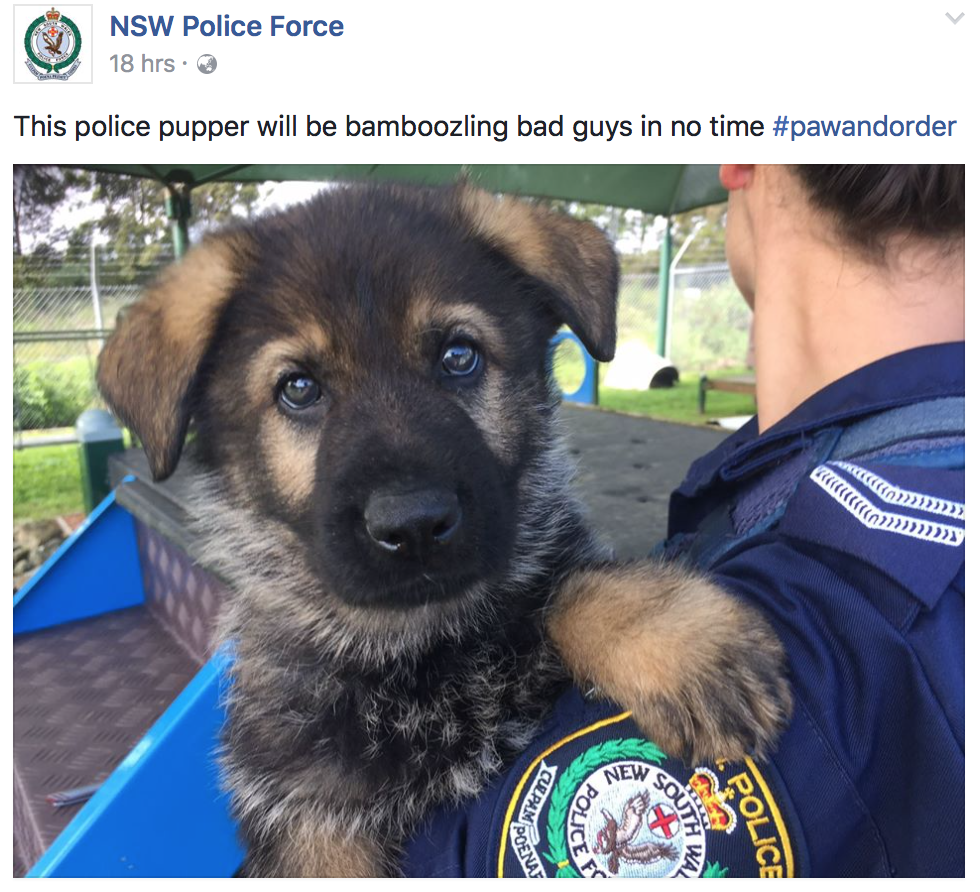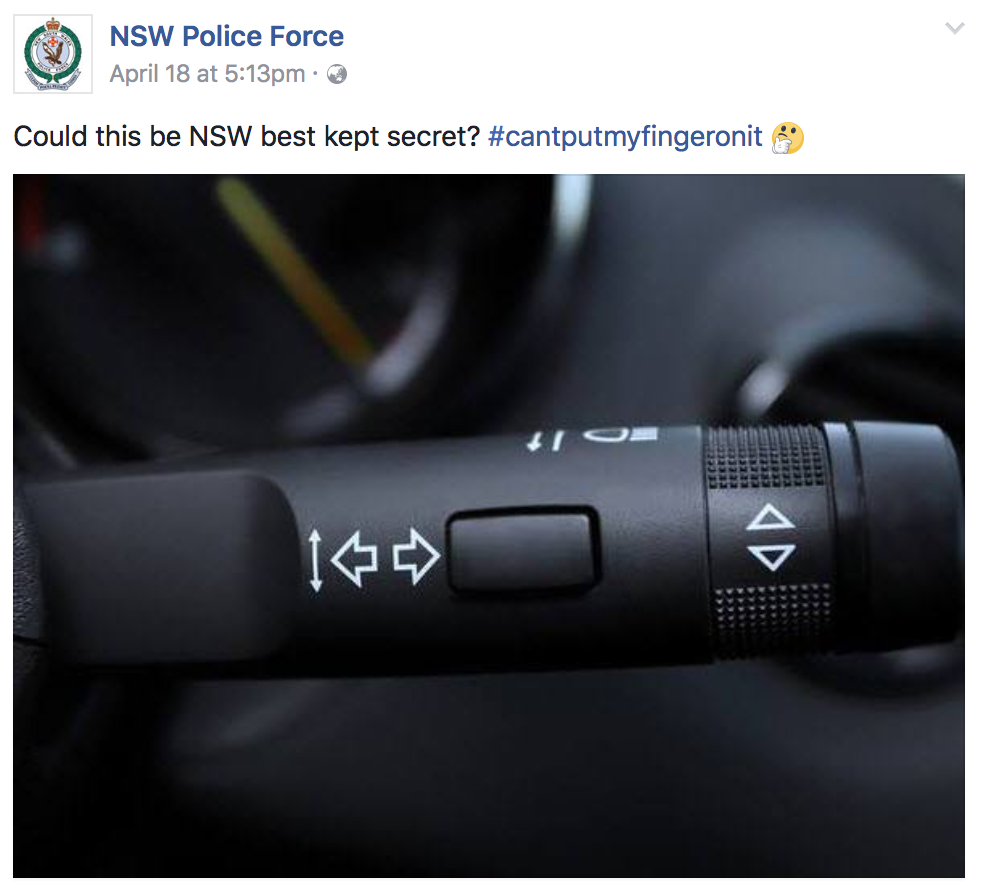If you’ve been closely monitoring your Facebook feed lately, you may have noticed a dramatic change in the NSW Police Force social media strategy. Their humorous and casual tone was a bit of a risky change for a serious government agency, but it seems to have paid off, resulting in a significant increase in their youth engagement.
Knowing how difficult it can be for a government agency to successfully engage young people, YouthSense reached out and asked them some questions. We wanted to know who was behind this genius and how it was being passed through higher authorities. Young people tend not to see the words ‘government’ and ‘funny’ as synonymous, let alone funny enough to engage the enigmatic youth of today’s world. And yet, here they are, using memes and Eminem lyrics to win the hearts of youngsters, engaging them in issues affecting their communities and maybe even reducing some crime in the process.
The NSWPF is a great example of a serious organisation using humour without sacrificing their integrity or their message. And it’s working. NSWPF reported that 81% of their surveyed audience agreed or strongly agreed that communicating with the NSWPF over Facebook made them feel ‘more positive towards Police’ and 83% agreed or strongly agreed that the NSWPF Facebook Page made them ‘more informed about Police work’. The proof is in the pudding.

We asked NSW Police why they decided to use these largely meme-based updates:
Our memes are designed to create a positive image for the Force (we are human) and secondly to help generate enhanced engagement [so] that our fan-base can see more of our other posts, based on the way the algorithm works. We have surveyed our fans several times and they definitely want to see as much of our content as we can provide, so the meme strategy is our method of achieving that. People trust the police. Our information is authentic… appealing for help to solve crime and also telling the community when crime has been solved and warning of dangers…
The Facebook algorithm, one of the most influential and yet mysterious algorithms in the world, is designed to deliver the most engaging content to Facebook’s users based on their activities online. As much as we can criticise memes and ironic hashtags or think them entirely ridiculous, it’s not about us. Young people are crazy about them, therefore the algorithm favours these updates. As marketers, youth engagement specialists or content strategists with a youth market, we need to make sure we’re engaging with them too.

With young people, it’s important to strike while the iron is hot, otherwise you risk coming off as out of touch. For those who like a secure and unmoving strategy, this isn’t always comfortable. NSWPF say it’s more important to get in on the joke while it’s current than to abide by your schedule. They told YouthSense:
‘Being able to stay on top of emerging trends in pop culture and memes has enabled us to build a reputation of having an innovative online communication strategy. Memes are fickle in nature i.e one minute they’re popular, and the next they’re not. To avoid potential criticism from our audience, we try and always use a reference when it’s at the height of the potential popularity cycle.’

When consulting with other industries, we frequently struggle to articulate exactly why these strategies are important to master. Young people know when you’re trying too hard and they won’t hesitate to point out the fact. What they require is authenticity, consistency and social relevance. And how is this achieved? Usually through another young person, who inherently knows what works and what doesn’t.
Even with the median age at the Year13 office being 22, it’s hard to keep on top of all the meme trends in the dankosphere (and not become jaded in the process), so we hire a high school leaver every year to make sure our written content and memes remain relevant and engaging. The man behind the action at NSWPF is 27, and he has a “good sense for what will be popular.” He told us, “I enjoy staying on top of popular culture by looking at different Facebook pages, blogs and websites to see what is trending. In saying this, we definitely put a lot of work into our posts.”

Many reject this approach to youth engagement simply because they believe it will damage their brand. The reality is, 62% of young people say that ‘if a brand engages with them on social networks, they are more likely to become a loyal customer.’ They expect brands to know where they are and to be engaging.
NSWPF says, “there is definitely a balance between being flippant or amusing and being a police force. We believe this strategy aids in removing the negative stigma sometimes associated with law enforcement. Police are part of the community and we like to have a laugh too.”
When it comes to the strategies we build to better engage young people, the NSW Police Force sum up their campaign pretty well: “There’s no law against being funny.”
Download our report to read more of our research and unique youth insights.






